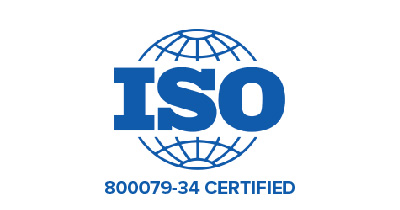If you’ve been tasked to ‘do your homework’ and research a real-time location system (RTLS) for your organization, you likely already know the benefits of implementation. Whether you’re operating a healthcare facility, heavy industry site, or commercial enterprise, RTLS can save your organization time and money by tracking assets, personnel, and patients. The integrated use of tracking tags and software in a single system can increase efficiencies of workflow and asset-use, prevent asset loss and theft, and protect the safety of patients and staff.
However, every enterprise has unique requirements and challenges. In the past, we have talked about general tips on how to choose the best RTLS platform. Today, we will talk about the factors to consider when choosing a system for your environment.
Is the RTLS solution a proven platform?
Like any major capital or software purchase, it’s wise to do due diligence to ensure that it’s the right solution for your enterprise or healthcare facility. Find out whether the specific platform is used in your sphere. Is the RTLS platform provider an expert in serving your industry or sector? And do they have a track record in building the RTLS technology, or have they acquired an RTLS brand without necessarily having an understanding of how the technology works?
You can also request customer references from the RTLS technology provider. Then call them. Ask the references about their experience using the technology, and whether they would recommend the RTLS company.
What level of customer service do they offer?
Ask the provider what level of support they offer. Is it a one-size-fits-all, or can you customize your support program to your needs? If you have in-house IT resources, you may prefer to do your own updates, and work with the provider’s technical support to perform any configuration or troubleshooting.
One key question to get answered is how responsive is the platform provider? When problems occur, it’s invariably time-sensitive – or they happen in the early hours of the morning when most businesses are closed. Does the RTLS provider offer 24/7 remote or on-site support to meet your critical needs?
What is the warranty on the RTLS hardware, and how quickly and seamlessly can it be replaced? Are the on-site technicians certified to troubleshoot and repair the system?
What type of staff training and professional services does the RTLS provider offer?
Implementing new technology always involves a learning curve for staff and a commitment of time. Personnel who are properly trained in how to use the RTLS hardware and software will be less resistant, and more confident in using an RTLS system. After all, staff are the experts in their field and if they’re fully trained, they’ll be able to take advantage of the many time- and cost-saving benefits of the powerful data that an RTLS system generates.
Be sure to ask what the end-user practical and technical training involves. For healthcare facilities, you will want to know whether clinical training is provided. In addition, if your organization works with different types of software, it’s important to confirm that there will be technical training provided for system integrator partners.
Does the provider offer a variety of tags?
First, you’ll need to determine your organization’s needs in terms of what kinds of tags you’ll need. Tags are the devices that are attached to people or assets to locate them or monitor their movements. Does the RTLS provider offer different types of tags depending on whether you want to be able to track personnel, patients, or assets?
For example, in an industrial environment, the asset tag should have a long battery life, and be rugged enough to withstand the outdoor elements — and potentially hazardous environments. For sensitive and expensive equipment in a hospital, it would be more appropriate to use a low-profile asset tag that features a temperature sensor, and tamper and motion detection.
Tags for personnel may be used simply for access control, or they could include real-time locating capability and a push button to call for assistance if the professional encounters a combative situation. Other staff tags may offer two-way communication with built-in audio and visual indicators, which allow commands and responses to be delivered over a long range.
In a healthcare setting, consider the types of tags you’ll need for patients, such as single-use, disposable umbilical tags for newborns, a standard patient tag to monitor patients of all ages, or one that has a push button call for assistance or fall detection for longer-term care patients.
As you do your research, be aware that not all RTLS technologies have the same features, and there can be a wide range in functionality, integration capabilities, and cost.
For more information on RTLS solutions real-time asset, personnel and patient tracking, talk with one of our RTLS experts. You may qualify for a complimentary system design.


